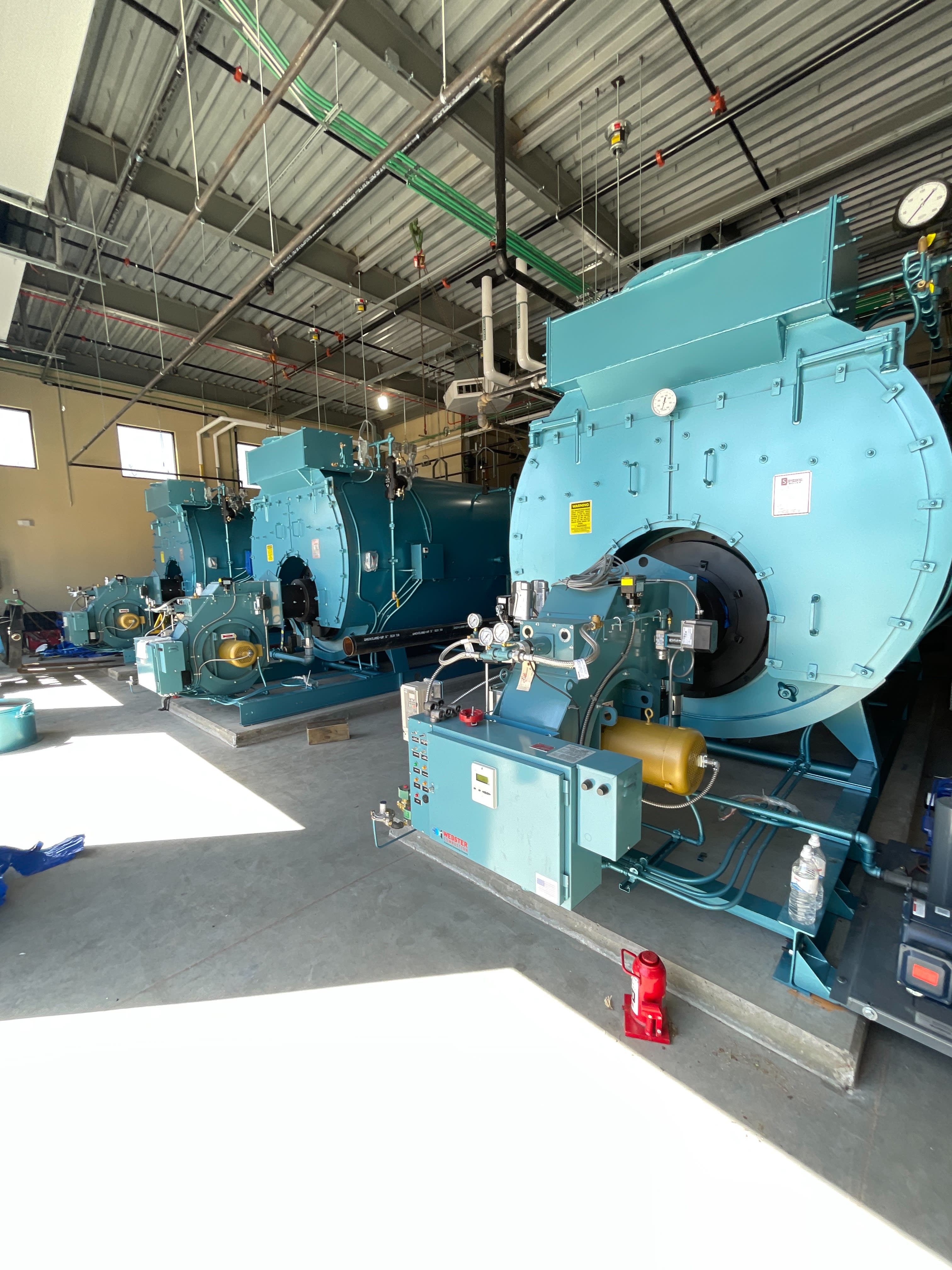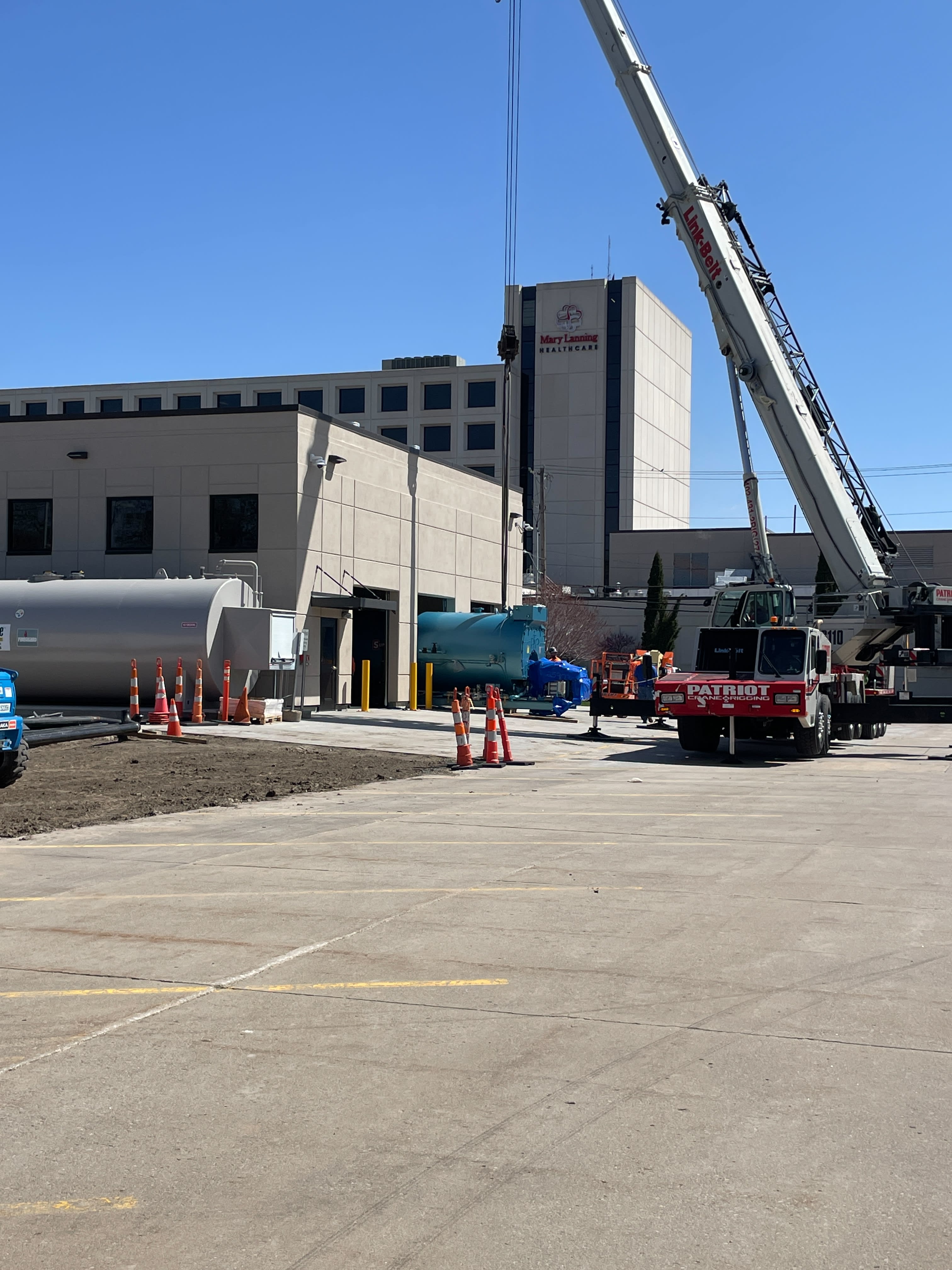Mary Lanning Healthcare’s Facility Transformation: Zero Downtime, Maximum Impact
Hospital modernization project delivers critical infrastructure upgrades without disrupting hospital operations.
In the heart of Hastings, Nebraska—a tight-knit community an hour west of Lincoln— Mary Lanning Healthcare (MLH) offers essential medical care to the region’s population. In 2019, the hospital began plans for a facility modernization initiative to proactively address aging infrastructure and operational costs that could pose future risks to mission-critical systems.

In 2020, amid the rapidly evolving healthcare landscape and mounting pressures from the COVID-19 pandemic, MLH stayed the course to enhance its services and infrastructure, breaking ground on a new medical office building and launching a major modernization of its central heating plant. Schneider Electric partnered with the hospital on the transformative project, working closely with MLH to design and build a $7.8 million central steam boiler plant and relocating infrastructure to accommodate future expansion. Located across the street from the main hospital, the new plant aims to significantly enhance system resilience and performance while also unlocking valuable real estate inside the hospital for expanded medical services.-
This project supports MLH’s continuous goal to maximize healthcare outcomes for the community. Upgrades to the plant’s steam system allow the hospital to improve heating capabilities within their buildings. This means more reliable indoor temperature and water heating, which translates to advanced occupant comfort and patient care. Space planning is also key to this effort. By relocating the infrastructure outside of the main building, MLH has been able to repurpose valuable internal space for new medical and emergency services, allowing the hospital to provide an even higher level of care through new and expanded offerings.
In addition to these core benefits, the project also:-
-
Reduced long-term operational risks by replacing outdated boilers and improving redundancy.-
-
Helped implement a straightforward natural gas service solution making the hospital’s transition to the new plant simpler and avoiding potential long-term operational issues.
-
Extended heating capacity to the connected Medical Office Building (MOB), improving performance while avoiding additional infrastructure costs.-
Collaborative Execution Ensures Operational Continuity
 Despite the project’s complexity and scope, one thing was non-negotiable: zero downtime for hospital operations.-To ensure continuous service delivery, the hospital kept the existing boiler plant operational until the new facility was fully functional. The transition required precise sequencing of activities: from constructing the plant structure and walls to installing new electrical systems, a backup fuel storage tank, and conducting asbestos abatement. One of the most technically complex elements involved tunneling beneath the street to lay new connecting piping, an essential step successfully completed without disrupting hospital services.-
Despite the project’s complexity and scope, one thing was non-negotiable: zero downtime for hospital operations.-To ensure continuous service delivery, the hospital kept the existing boiler plant operational until the new facility was fully functional. The transition required precise sequencing of activities: from constructing the plant structure and walls to installing new electrical systems, a backup fuel storage tank, and conducting asbestos abatement. One of the most technically complex elements involved tunneling beneath the street to lay new connecting piping, an essential step successfully completed without disrupting hospital services.-
The hospital also emphasized the importance of local community engagement and aesthetics. As the prime contractor, Schneider Electric worked closely with local subcontractors and honored the hospital’s request to design the new facility in a style that mirrored existing buildings, maintaining a unified campus appearance. This commitment to customization, quality, and partnership eliminated unexpected change orders and cost overruns, resulting in a smooth and efficient project delivery.
Throughout the engagement, both the Mary Lanning Healthcare and Schneider Electric teams remained committed to transparency and collaboration. As a result, the hospital achieved uninterrupted operations while executing a technically complex and transformative modernization.
This partnership with MLH is a prime example of how Schneider Electric helps critical institutions navigate uncertainty and deliver long-term value to the communities they serve. For more on our work with forward-thinking public sector organizations, visit our Public Sector page.